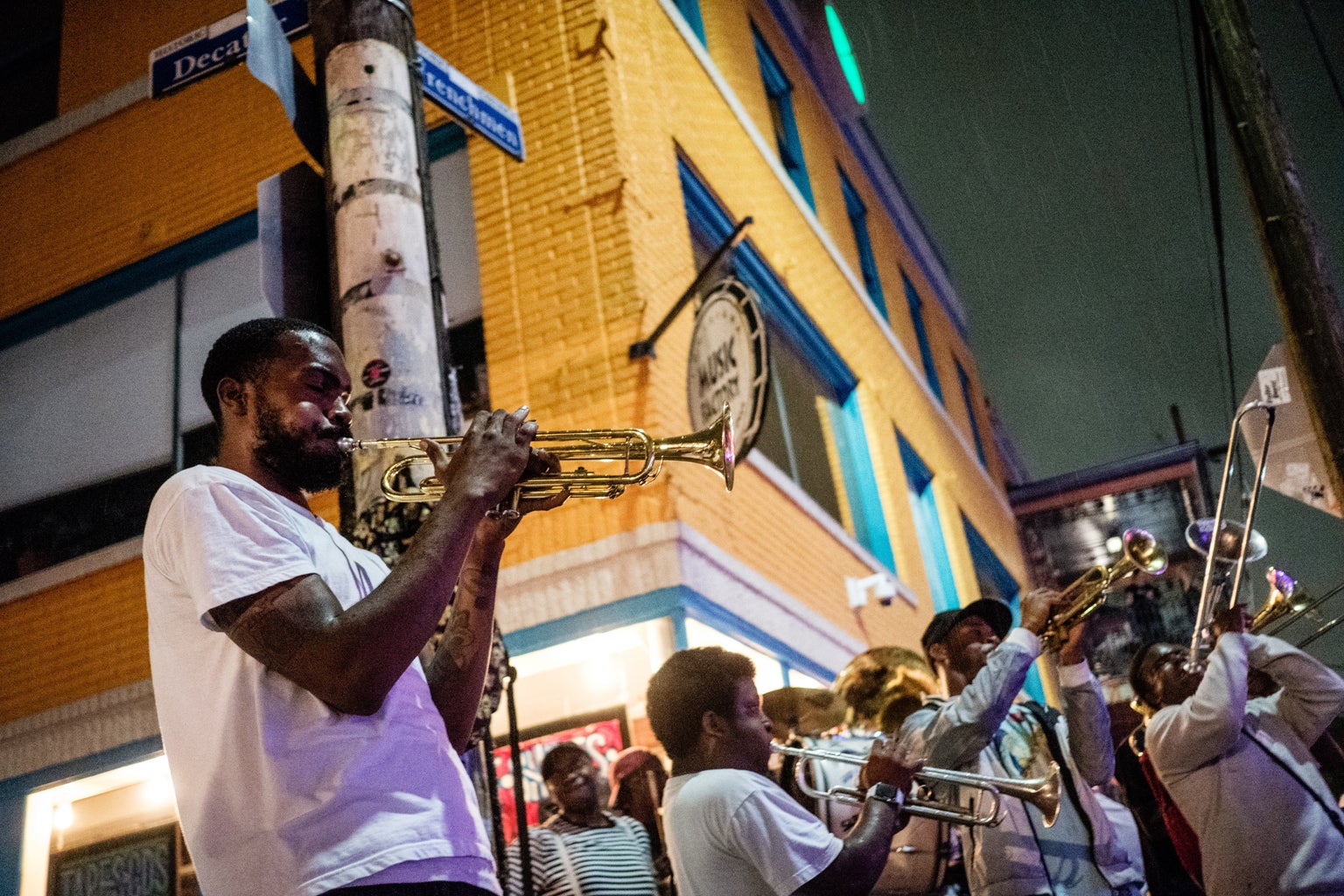For the largest collegiate marching band in the northeast, 2021 marks the 148th anniversary of the University of Massachusetts Minuteman Marching Band. Known as the “Power and Class of New England,” the band has received some of the highest honors a collegiate marching band can achieve, from winning the 1998 Sudler Trophy, to marching in the 2013 Macy’s Thanksgiving Day Parade, to being part of the 2018 Tournament of Roses Parade in Pasadena, California. But, to many on the UMass campus, the inner workings of the band are somewhat of a mystery. The band is housed in the George N. Parks Minuteman Marching Band Building, affectionately known as GNiP, on the west side of campus, which celebrates its 10th anniversary on Nov. 5, 2021. However, the band’s origins far predate the building, tracing all the way back to the nineteenth century.
The first recorded instance of the band’s existence is from 1873. Its style was very different from today, and it was instead an 11-person military band. In the 1880s, the band expanded to hold regular practices, perform at more functions, and perform and rehearse at Old Chapel, which is one of the band’s most notable previous homes. The early 1900s continued this positive trajectory, but there was a lack of consistency between temporary leadership for the organization and the U.S. being in and out of wartime. Important milestones began, such as the writing of the school fight song in 1930, buying official uniforms in 1932, and the first female band members joining as drum majors in 1940. Even after World War II, women still weren’t allowed to play in the band, but a women’s drill team, known as The Precisionettes, was created in 1946. But this issue ended in 1951 when the band completely disaffiliated with the university’s military department and women became official members for the first time in 78 years.
The 1960s marked a major turning point for the band. They began to heavily adopt the styles of the University of Michigan’s marching band under director John Jenkins. The band had always relied heavily on student leadership, but Jenkins formalized these roles by implementing student administrative staff and student field staff. The band grew exponentially under Jenkins’ direction and experienced many “firsts” in terms of special performances. In 1969, the Epsilon Nu chapter of Kappa Kappa Psi and the Delta Delta chapter of Tau Beta Sigma — the marching band’s service fraternity and sorority — were founded. In 1974, the now-renowned color guard was established.
In 1977, George N. Parks, the namesake of the current-day marching band facilities, was hired as the new director of the Minuteman Marching Band. Fans of the band were heavily skeptical of Professor Parks upon his hiring, due to his young age and introduction of a new marching style, but he was an immediate success among the entire campus community. Parks is well-known for establishing many of the band’s most notable traditions, such as the playing of “My Way” at the end of each performance. In 1984, he formally hired Thomas P. Hannum, who originated the role of assistant band director, to work with the band’s percussion section. Hannum was also responsible for the development of the band’s front ensemble and continues to work with the band today. He celebrated 40 years of involvement with the band in 2019. Parks was also responsible for beginning the tradition of the band’s annual performance at various occasions, such as the MICCA finals, the Allentown Collegiate Marching Band Festival, UMass Band Day, and many more. But, in 1997, Old Chapel was in dire need of major structural repairs, and the band was forced to move out and relocate. With such a large organization and so much equipment, it was difficult for the band to find a new home. They were shuffled between the University Apartments, Arnold House, and other off-campus locations. Despite this hardship, the band was still so successful that they received the Sudler Trophy the following year, and was set to receive funding for the construction of official marching band dedicated facilities.
In 2010, the band experienced one of their most paralyzing tragedies. While traveling to the University of Michigan for an away-game performance, the band performed in a marching band exhibition at Cuyahoga Falls High School in Ohio. On the night of Sept. 16, 2010, Professor George N. Parks suffered from a heart attack and passed away. The band was grief-stricken by the news the following morning, but continued their trip in order to perform in honor of their beloved director. The band’s performance of “My Way” at the University of Michigan following Parks’ death is known to be one of the most powerful, emotional, and moving performances in the band’s history. To this day, the band closes every performance by playing “My Way.”
Associate Director Thomas P. Hannum led the band in place of Professor Parks for the remainder of the 2010 season, and the following year, current director Dr. Timothy Todd Anderson was hired to lead the band into a new generation. Dr. Anderson has made a concerted effort to maintain the ideals, morals, and traditions implemented by Professor Parks, while still helping the band grow and adapt along with its members.
That same year, construction on the new marching band facilities was completed, and the building was named the George N. Parks Minuteman Marching Band Building, after the late professor who had contributed so much to its fruition. Dr. Anderson has helped the band reach some of its highest accomplishments, like the 2018 Tournament of Roses Parade and the 2013 Macy’s Thanksgiving Day Parade. He even guided the band through the pandemic, keeping traditions alive over Zoom for fall 2020, organizing the first ever socially distanced spring band, and bringing the band back better than ever for their 2021 return to the field.
In the past 10 years since the opening of the building, the band has thrived. The band currently has over 350 members, and they perform at each home football game in addition to other events throughout the year. Unfortunately, Professor Parks did not get to live to see the completion of the marching band building’s construction, but its dedication to him in being named the George N. Parks Minuteman Marching Band Building is a tribute to all that he did for the band over his 33 years as director. Even today, his influence on the organization lives strong and will continue to do so for the rest of the band’s lifetime. To learn more about the UMMB, you can visit their website here.
Note: Historical information in this article was found on The Official UMass Band History Page and sourced heavily from primary sources in UMMB records.
Can’t get enough of HC UMass Amherst? Be sure to follow us on Instagram, listen to us on Spotify, like us on Facebook, and read our latest Tweets!




